Part 27: January 22 Broadcast

You are listening to BBC radio 4. In an hour, we’ll be staying with Professor David Stephenson for an additional view into modern Dutch technical advances, and how they’re keeping us safe today. For the next hour, Professor David Stephenson will be presenting a documentary on the second 80 years war of the eighteenth century. This series will be running every third day, up to 50 episodes. If you want news of the current war in the Middle East please channel in to BBC radio 1.
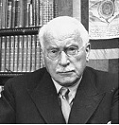 Good evening, and welcome to BBC radio 4. I’m Professor David Stephenson, professor of Dutch historical studies at Cambridge. This is the twenty-seventh part of our 50 episode special on the second 80 years war over Europe. Joining me for these broadcasts are fellow researchers and scholars Doctor Albert Andrews, specialist in German studies from the Berlin academy, Professor Robert Lowe, specialist in French studies at Cambridge, and a graduate student and technical assistant, Anton Thatcher. Last episode, we discussed the last of the British in America, and the world closing in against the Dutch.
Good evening, and welcome to BBC radio 4. I’m Professor David Stephenson, professor of Dutch historical studies at Cambridge. This is the twenty-seventh part of our 50 episode special on the second 80 years war over Europe. Joining me for these broadcasts are fellow researchers and scholars Doctor Albert Andrews, specialist in German studies from the Berlin academy, Professor Robert Lowe, specialist in French studies at Cambridge, and a graduate student and technical assistant, Anton Thatcher. Last episode, we discussed the last of the British in America, and the world closing in against the Dutch. But the Dutch had to focus on their present. The Genoese were still tying down their armies in Genoa and Corsica. The treacherous Italian states were still free, leveraging their connection to the Vatican and remained a threat despite the negotiated peace. While Poland had declared war, neither side was yet ready to make the first move. The Dutch were too weak to challenge to Polish armies, while the Polish were threatened on the flank by the persistent Prussian armies. Similarly, the British had formed a powerful army to oppose the Dutch, but did not have the navy needed to invade. Conversely, the Dutch did not have the strength to invade the British even if they cleared the channel, a prospect that was becoming more difficult by the year as the British increased their naval production dramatically.
But the Dutch had to focus on their present. The Genoese were still tying down their armies in Genoa and Corsica. The treacherous Italian states were still free, leveraging their connection to the Vatican and remained a threat despite the negotiated peace. While Poland had declared war, neither side was yet ready to make the first move. The Dutch were too weak to challenge to Polish armies, while the Polish were threatened on the flank by the persistent Prussian armies. Similarly, the British had formed a powerful army to oppose the Dutch, but did not have the navy needed to invade. Conversely, the Dutch did not have the strength to invade the British even if they cleared the channel, a prospect that was becoming more difficult by the year as the British increased their naval production dramatically.
The British navy were increasing the strength of their naval assaults. Every year, they became stronger at sea, and their attacks became more regular and far reaching.
 The Swedish and Russian governments were also a cause for consideration, with Dutch politicians unable to assuage the fears of the world. Their constant and unstoppable armies and conquests could not be taken from the forefront of policy the world over. While Russia was unlikely to intervene with no access to central Europe, and no means to move a navy around to attempt an invasion through the Mediterranean, Sweden had easy access to their heartlands through the sea, and worse yet, could invade through the Dutch allies at Hannover. For now however, the Dutch needed to focus on the Genoese, while holding back the Polish and British.
The Swedish and Russian governments were also a cause for consideration, with Dutch politicians unable to assuage the fears of the world. Their constant and unstoppable armies and conquests could not be taken from the forefront of policy the world over. While Russia was unlikely to intervene with no access to central Europe, and no means to move a navy around to attempt an invasion through the Mediterranean, Sweden had easy access to their heartlands through the sea, and worse yet, could invade through the Dutch allies at Hannover. For now however, the Dutch needed to focus on the Genoese, while holding back the Polish and British.
The Dutch and Polish forces stare one another down at the Bavaria-Saxony border.
 By late 1747, the Dutch had increased their demands on the Genoese, hoping to come to a peaceful conclusion. While the V.O.C. officers were confident and well rested by then, enough so that an assault would be successful, they were out voted or outranked by the commanding European officers, who had been far more timid since the death of Ouewerkerk. The siege of both Genoan outposts continued into 1748, where the Genoese were forced into attempting a breakthrough.
By late 1747, the Dutch had increased their demands on the Genoese, hoping to come to a peaceful conclusion. While the V.O.C. officers were confident and well rested by then, enough so that an assault would be successful, they were out voted or outranked by the commanding European officers, who had been far more timid since the death of Ouewerkerk. The siege of both Genoan outposts continued into 1748, where the Genoese were forced into attempting a breakthrough.
The Dutch entrenched outside Genoa. Their fortifications were well dug in, but were turning to mud in the rain. The Genoese hoped the rain would foul the powder enough to get into range, as they were relying on sword armed cavalry to a fairly large degree.
 The fortress at Genoa itself was garrisoned full of artillery and cavalry. Their infantry numbered over a thousand, but with a collective three-thousand Dutch infantry when you include their reserve were a far superior line. Stationed high on a hill, the reinforcing V.O.C. were on the wrong side of the fortress at the outset of the battle, and so they had to abandon their counter fortifications and march to the assistance of the continental army.
The fortress at Genoa itself was garrisoned full of artillery and cavalry. Their infantry numbered over a thousand, but with a collective three-thousand Dutch infantry when you include their reserve were a far superior line. Stationed high on a hill, the reinforcing V.O.C. were on the wrong side of the fortress at the outset of the battle, and so they had to abandon their counter fortifications and march to the assistance of the continental army. 
Columns of Dutch infantry marching to assist against an attempted Italian breakthrough.
 The main defensive Dutch force had set up along the East of the fortification along a tall slope where their cannons had a commanding view of the battlefield. Their line infantry had used earthwork barriers to stop the return cannon fire from destroying their infantry. The V.O.C. veterans would come into the battle from the left flank of the Dutch line. The Genoese, with a very peculiar composition had a very intelligent strategy to destroy as many Dutch attackers as possible.
The main defensive Dutch force had set up along the East of the fortification along a tall slope where their cannons had a commanding view of the battlefield. Their line infantry had used earthwork barriers to stop the return cannon fire from destroying their infantry. The V.O.C. veterans would come into the battle from the left flank of the Dutch line. The Genoese, with a very peculiar composition had a very intelligent strategy to destroy as many Dutch attackers as possible.
The Genoese cavalry and artillery move into position on the field.
 Deploying their cannons far forward, in terribly vulnerable positions, the more impetuous V.O.C. immediately leapt at the opportunity to destroy the exposed artillery, destroying several Genoese cannons. Extended far forward, the V.O.C. cavalry immediately looked to find more artillery to spike, not noticing the V.O.C. reinforcing infantry were struggling to keep up, and that the main line hadn’t moved at all.
Deploying their cannons far forward, in terribly vulnerable positions, the more impetuous V.O.C. immediately leapt at the opportunity to destroy the exposed artillery, destroying several Genoese cannons. Extended far forward, the V.O.C. cavalry immediately looked to find more artillery to spike, not noticing the V.O.C. reinforcing infantry were struggling to keep up, and that the main line hadn’t moved at all.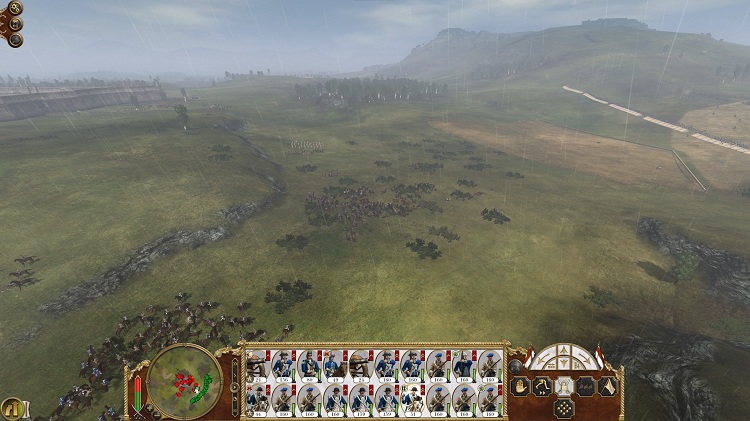
Dutch cavalry rush forward to spike the exposed artillery. With plenty more artillery in reserve, the Dutch move right into a trap.
 The Genoese had plenty more artillery further in reserve removing some of the sting of the loss. The trap however, was the tremendous cavalry counter charge against the V.O.C. cavalry. The main line of infantry and the continental regimental cavalry were slow to react letting the Genoese regiments of horse destroy the Dutch cavalry piecemeal. By the time the Dutch infantry had moved forward, all of the Dutch cavalry had been destroyed. The remaining Genoese cavalry attempted to crack the Dutch lines where they could, but the Dutch had moved their weakest battalions, the militia, into seven rank thick lines that could easily absorb and push back the cavalry charge.
The Genoese had plenty more artillery further in reserve removing some of the sting of the loss. The trap however, was the tremendous cavalry counter charge against the V.O.C. cavalry. The main line of infantry and the continental regimental cavalry were slow to react letting the Genoese regiments of horse destroy the Dutch cavalry piecemeal. By the time the Dutch infantry had moved forward, all of the Dutch cavalry had been destroyed. The remaining Genoese cavalry attempted to crack the Dutch lines where they could, but the Dutch had moved their weakest battalions, the militia, into seven rank thick lines that could easily absorb and push back the cavalry charge.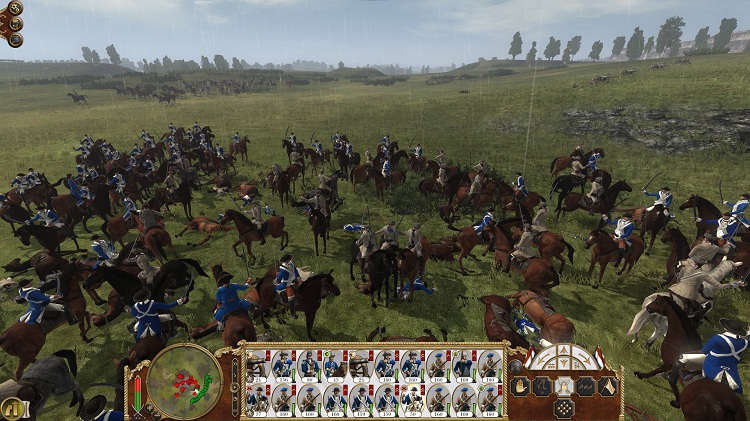
Dutch cavalry were caught between many Genoese regiments of horse, eventually finding themselves surrounded, outnumbered and killed.
 It had helped level the field somewhat, but perhaps not enough. While the Genoese had far more cavalry which were lost in the assault, the Dutch had only 2 small batteries of cannons to the four remaining Italian batteries. With cavalry nullified on either side, the cannons on either side would be far harder to reach. The Dutch would have to rely on their men in a direct and bloody close range gun fight.
It had helped level the field somewhat, but perhaps not enough. While the Genoese had far more cavalry which were lost in the assault, the Dutch had only 2 small batteries of cannons to the four remaining Italian batteries. With cavalry nullified on either side, the cannons on either side would be far harder to reach. The Dutch would have to rely on their men in a direct and bloody close range gun fight.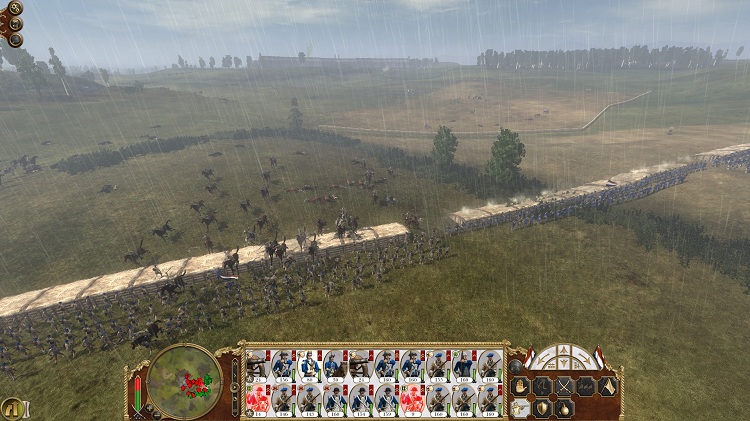
The Italian cavalry was also bogged down and eventually killed, but not before they had trampled hundreds of Dutch militia to death.
 Advancing on the left into a narrow pass between small faults in the ground, the Dutch were hampered slightly by the pass, letting the outnumbered Italians hold up far more than their own number. The Dutch, forced into a thick line rather than spread as far as they wished, charged forward. The dense, massed charge was far more effective in melee than the thin lines used by the Italians in that case.
Advancing on the left into a narrow pass between small faults in the ground, the Dutch were hampered slightly by the pass, letting the outnumbered Italians hold up far more than their own number. The Dutch, forced into a thick line rather than spread as far as they wished, charged forward. The dense, massed charge was far more effective in melee than the thin lines used by the Italians in that case.
The Dutch were forced into a dense, compressed line facing off against a vastly outnumbered array of Genoese infantry. Due to the narrow formation, the Dutch were losing a horrendous number of men considering their supposed advantage.
 The center continued to remain atop their hill, letting the Genoese infantry mass along the right to stop the Dutch left. However the Dutch charge managed to break through the detachment’s right flank letting their line infantry surround the remaining Genoese force. A pair of battalions had remained to keep the main Dutch force in check. They were rapidly moved to defend their remaining cannons which continued to rain down a constant barrage of cannon fire onto the Dutch.
The center continued to remain atop their hill, letting the Genoese infantry mass along the right to stop the Dutch left. However the Dutch charge managed to break through the detachment’s right flank letting their line infantry surround the remaining Genoese force. A pair of battalions had remained to keep the main Dutch force in check. They were rapidly moved to defend their remaining cannons which continued to rain down a constant barrage of cannon fire onto the Dutch.
The continental Dutch army. Even as the fighting broke out, they did not move from their fortifications. They would advance once the flank had been entirely cleared.
 Now open on all sides, and faced only by approximately two hundred fifty men in the center, the continental Dutch forces finally opted to advance, though not before the V.O.C. had already swept in from the right flank of the Genoese. Though the Dutch had lost their cavalry, the Italians no longer had the infantry presence required to block their charges. The last of their infantry as well as their general fled back into the safety of their fortress. While beaten, the Genoese would continue to tie up Dutch forces for at least another half year.
Now open on all sides, and faced only by approximately two hundred fifty men in the center, the continental Dutch forces finally opted to advance, though not before the V.O.C. had already swept in from the right flank of the Genoese. Though the Dutch had lost their cavalry, the Italians no longer had the infantry presence required to block their charges. The last of their infantry as well as their general fled back into the safety of their fortress. While beaten, the Genoese would continue to tie up Dutch forces for at least another half year.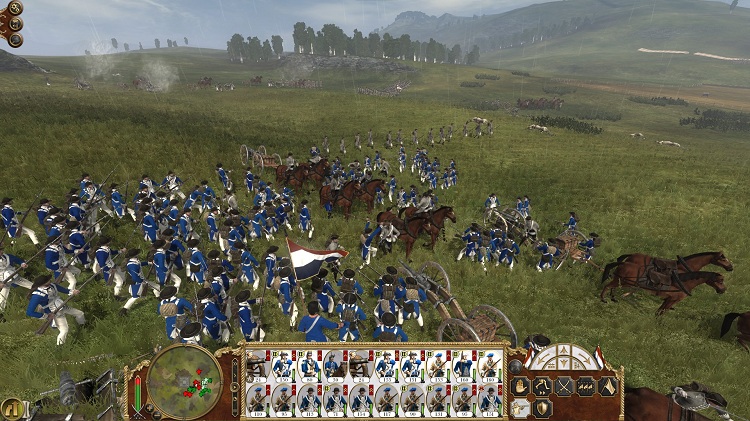
The final charge, breaking the Genoese defenses. As all their cavalry had been lost, the Dutch could not destroy the Genoese completely, and several made it back into their star fort.
 Corsica was an altogether different matter. While again, the Genoese had more cavalry than was practical for the age, they had no fortifications. For decades they had relied upon the relative insignificance and natural terrain to keep them safe, and they would not have been capable of providing the funding to produce any sort of fortification regardless. This meant the V.O.C. troops that had landed ashore on Corsica had little excuse not to attack. Correspondence between the V.O.C. commanders on Corsica and the others in Genoa indicate they had desired a unified timeline to allow for superior transportation to the center of Europe. Fortunately for the Dutch, the Genoese in Corsica had opted for a breakthrough in the same year.
Corsica was an altogether different matter. While again, the Genoese had more cavalry than was practical for the age, they had no fortifications. For decades they had relied upon the relative insignificance and natural terrain to keep them safe, and they would not have been capable of providing the funding to produce any sort of fortification regardless. This meant the V.O.C. troops that had landed ashore on Corsica had little excuse not to attack. Correspondence between the V.O.C. commanders on Corsica and the others in Genoa indicate they had desired a unified timeline to allow for superior transportation to the center of Europe. Fortunately for the Dutch, the Genoese in Corsica had opted for a breakthrough in the same year.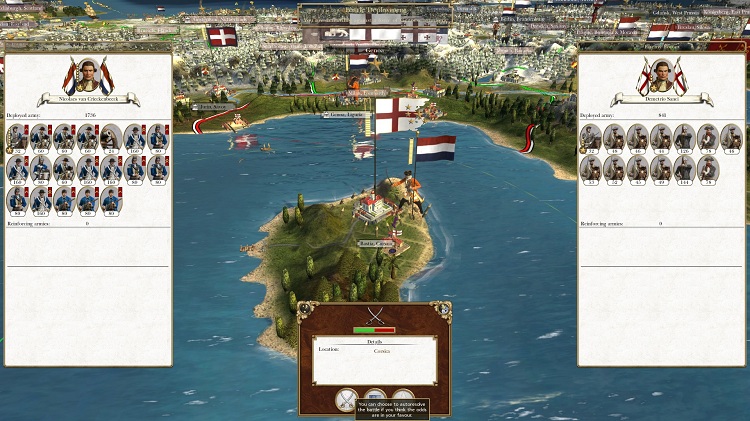
The Dutch had also waited rather than directly assaulting Bastia in Corsica. Without fortress walls, and with a tiny garrison, the Dutch could have easily swept over them months earlier.
 This breakthrough was far more one sided, and one could look through the few surviving letters and diaries of the V.O.C. infantry that had been deployed there. What few surviving pieces of correspondence exist indicate upon landing, the V.O.C. had treated the island as a vacation expending a ludicrous sum of money that had been earned in India where their pay was considerably higher than that of the average soldier. The mild weather, plentiful seafood brought in by ships around the Mediterranean and lack of any serious military threat to them made the stay far more pleasant than the prior year aboard cramped ships, and even moderately better than their time fighting the ferocious warriors of India in the blazing heat and dense humidity.
This breakthrough was far more one sided, and one could look through the few surviving letters and diaries of the V.O.C. infantry that had been deployed there. What few surviving pieces of correspondence exist indicate upon landing, the V.O.C. had treated the island as a vacation expending a ludicrous sum of money that had been earned in India where their pay was considerably higher than that of the average soldier. The mild weather, plentiful seafood brought in by ships around the Mediterranean and lack of any serious military threat to them made the stay far more pleasant than the prior year aboard cramped ships, and even moderately better than their time fighting the ferocious warriors of India in the blazing heat and dense humidity.
Corsica was a beautiful country. So long as Dutch soldiers didn't travel alone or unarmed, they were treated to a fairly pleasant stay.
 Even with the respite, the Genoese couldn’t wait out the siege forever. After months stuck in their barracks, they finally attempted a breakthrough. The Dutch forces managed to array themselves in line against them, the Genoese straight opposite. The Dutch had used primitive land mines as well as earthwork fortifications to blockade the Genoese in. Their light infantry were well positioned, direct opposite behind the mines, wooden stakes and directly in front of their own line. These deadly defenses would be harder than a fortress wall to take.
Even with the respite, the Genoese couldn’t wait out the siege forever. After months stuck in their barracks, they finally attempted a breakthrough. The Dutch forces managed to array themselves in line against them, the Genoese straight opposite. The Dutch had used primitive land mines as well as earthwork fortifications to blockade the Genoese in. Their light infantry were well positioned, direct opposite behind the mines, wooden stakes and directly in front of their own line. These deadly defenses would be harder than a fortress wall to take.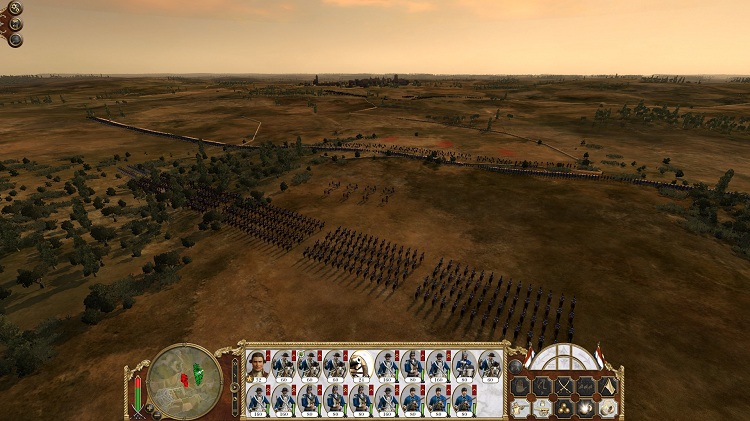
The incredibly formidable field defenses of the Dutch around Bastia. Incorporating wooden stakes, earthworks and mines, the defensive line came almost to resemble an early 1900s defensive line.
 The Genoese arranged in their line, opposite the Dutch and just outside of howitzer range were in a standoff. The Dutch had no reason to advance, and the Genoese knew that an assault would be suicidal. For a long hour, the Italian force stood waiting simply staring at the Dutch before they finally sounded the charge.
The Genoese arranged in their line, opposite the Dutch and just outside of howitzer range were in a standoff. The Dutch had no reason to advance, and the Genoese knew that an assault would be suicidal. For a long hour, the Italian force stood waiting simply staring at the Dutch before they finally sounded the charge.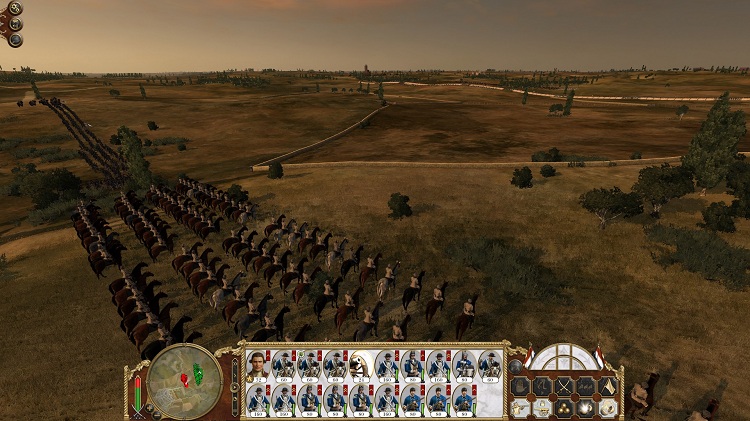
The Genoese stand off facing towards the Dutch. Standoffs such as this had occurred before.
 The cavalry led, a hundred cut down in the initial volleys. Another hundred were killed when they were stalled in the spikes pounded into the ground, caught out in the open in well ranged musket fire. Yet more were killed by the deadly shrapnel that was blown into their ranks by the makeshift mines built by the Dutch. Following directly behind that desperate cavalry charge was the infantry. By then, the Dutch light infantry was forced to retreat behind their lines turning the fight into a musket to musket battle, the Dutch holding the key advantage of their dirt mound walls.
The cavalry led, a hundred cut down in the initial volleys. Another hundred were killed when they were stalled in the spikes pounded into the ground, caught out in the open in well ranged musket fire. Yet more were killed by the deadly shrapnel that was blown into their ranks by the makeshift mines built by the Dutch. Following directly behind that desperate cavalry charge was the infantry. By then, the Dutch light infantry was forced to retreat behind their lines turning the fight into a musket to musket battle, the Dutch holding the key advantage of their dirt mound walls.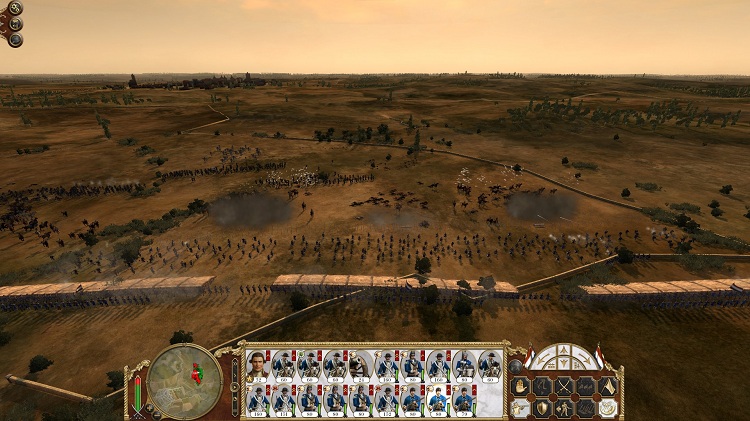
The Genoese assailants are butchered in the initial charge as they make their way forward desperately. Very few survive to retreat.
 Heavily outnumbered, the Genoese and their brave charge was brought down and scattered. While they had no other option but to surrender, the last charge of Genoa was a legend that was passed down as an act of unbridled courage, heroism, desperation and foolishness. A last charge, or Genoese charge is a turn of phrase that invokes those ideas to this very day.
Heavily outnumbered, the Genoese and their brave charge was brought down and scattered. While they had no other option but to surrender, the last charge of Genoa was a legend that was passed down as an act of unbridled courage, heroism, desperation and foolishness. A last charge, or Genoese charge is a turn of phrase that invokes those ideas to this very day.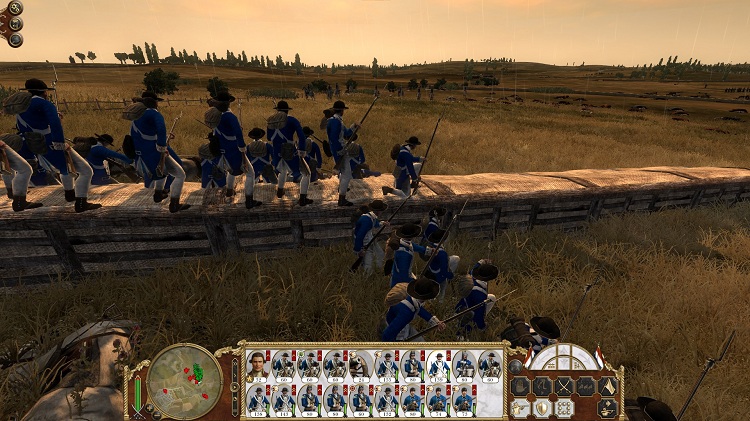
Victorious V.O.C. veterans watch from atop their earthworks as the last remnants of the Genoese retreat and are scattered.
 After the failed assaults at both Corsica and Genoa, the Genoese military underwent a coup, the tiny remaining garrison killing their officers and offering surrender to the Dutch army. At negotiation, the Dutch were able to secure Genoa as a protected state, a trade partner, and a part of the alliance. Now paying a portion of their tax income to the Dutch, and dependent upon them for even rudimentary protection, the Genoese were essentially put under the heel of the Dutch Empire.
After the failed assaults at both Corsica and Genoa, the Genoese military underwent a coup, the tiny remaining garrison killing their officers and offering surrender to the Dutch army. At negotiation, the Dutch were able to secure Genoa as a protected state, a trade partner, and a part of the alliance. Now paying a portion of their tax income to the Dutch, and dependent upon them for even rudimentary protection, the Genoese were essentially put under the heel of the Dutch Empire.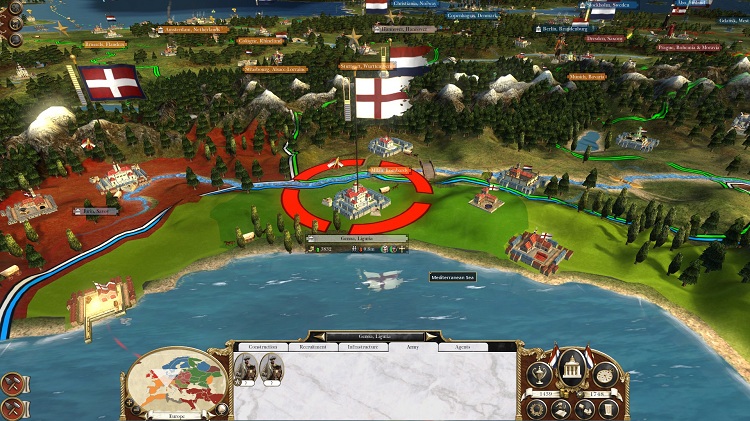
Genoa is spared, offering to pay a constant "tax" to the Western Atlantic Federation which was more or less militarily enforced tribute. Still hostile to the Dutch cause, they were in no shape to recover, and were in fact, deeply in debt.
 Genoa, now in Dutch hands kept more of the Mediterranean under their control, freeing troops that had been committed to the Italian theater the freedom to move against the Polish. Still worried about actually committing to a fight against them, the Dutch were hoping that a dramatic increase in their army’s presence could force the Polish to a peace agreement.
Genoa, now in Dutch hands kept more of the Mediterranean under their control, freeing troops that had been committed to the Italian theater the freedom to move against the Polish. Still worried about actually committing to a fight against them, the Dutch were hoping that a dramatic increase in their army’s presence could force the Polish to a peace agreement.
The Dutch and Polish did fight in 1748. In this depiction, an undersized border garrison, due to be reinforced within the year encounters a Polish border patrol near Saxony, driving them back with hand grenades.
 Now the Mediterranean was almost entirely dominated by the Western Atlantic Alliance. The Dutch controlled much of it, but the Portuguese had also made inroads. The only independent forces were the Italian states ostensibly protected by the Vatican, Savoy who had remained neutral and the Barbary corsairs, who were dramatically marginalized by the increase in organized navies to oppose piracy. The Ottoman Empire further east in the Baltic were in firm control. The Russians were completely hampered at sea stopping their trade and shutting down their ability to even produce a navy.
Now the Mediterranean was almost entirely dominated by the Western Atlantic Alliance. The Dutch controlled much of it, but the Portuguese had also made inroads. The only independent forces were the Italian states ostensibly protected by the Vatican, Savoy who had remained neutral and the Barbary corsairs, who were dramatically marginalized by the increase in organized navies to oppose piracy. The Ottoman Empire further east in the Baltic were in firm control. The Russians were completely hampered at sea stopping their trade and shutting down their ability to even produce a navy.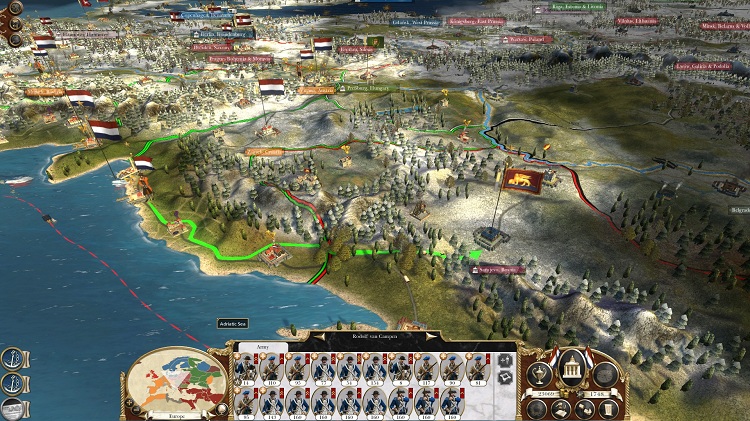
The Venetians were the last Italians fully opposed to the Dutch in their Bosnian stronghold. They too were under intense pressure.
 At this stage, the Dutch could breathe somewhat easier, but did not want to stretch further east than they already had. By now, it was clear their borders were reaching their practical limits, and that taking Poland would leave them in a dire position likely earning the ire of both Russia and Sweden. The Ottomans who had been friendly with the Dutch up to that point would likely become concerned about the safety of their own borders, which could very well leave the Dutch caught between those three great nations as well as Britain. A situation which would certainly lead to their demise unless very carefully navigated.
At this stage, the Dutch could breathe somewhat easier, but did not want to stretch further east than they already had. By now, it was clear their borders were reaching their practical limits, and that taking Poland would leave them in a dire position likely earning the ire of both Russia and Sweden. The Ottomans who had been friendly with the Dutch up to that point would likely become concerned about the safety of their own borders, which could very well leave the Dutch caught between those three great nations as well as Britain. A situation which would certainly lead to their demise unless very carefully navigated.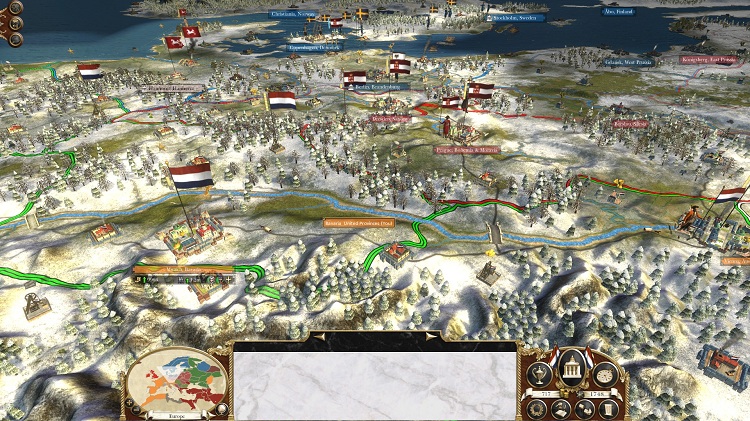
The Dutch were already stretched thin trying to cover their borders against the Polish. If they stretched further, exposing themselves to the Ottomans, the Russians, the Swedes and possibly the expanding Hungarians, the Dutch would likely be incapable of covering all fronts.
 And so the Dutch were looking towards the possibility of a diplomatic solution with the Poles, but not before clearing their northern fleet from the sea. With the trade ports of the Prussians blockaded, the Dutch were losing out on millions in trade. The Dutch hoped crushing the Polish fleet would have the two fold effect of opening trade with the Prussians and demonstrating their might. With greatly expanding British naval presence near the English channel, the fleet was also required to put down the British navy as they continued in their attempt to break through for an invasion.
And so the Dutch were looking towards the possibility of a diplomatic solution with the Poles, but not before clearing their northern fleet from the sea. With the trade ports of the Prussians blockaded, the Dutch were losing out on millions in trade. The Dutch hoped crushing the Polish fleet would have the two fold effect of opening trade with the Prussians and demonstrating their might. With greatly expanding British naval presence near the English channel, the fleet was also required to put down the British navy as they continued in their attempt to break through for an invasion.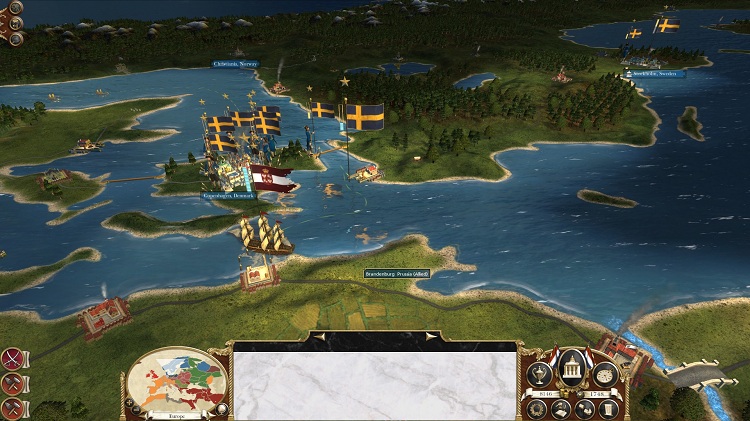
The Polish had strangled Prussian trade to the Dutch, amounting to a loss in millions per annum. The Dutch intended to wipe the fleet from the seas before turning to diplomacy.
 The fleet called into action for this was the Atlantic fleet with the lead third rate the Westfriesland, recently recalled from the American theater. The ships repaired and replenished in Trinidad were back to full strength by the time they returned off the coast of Spain. Their first task was to run down the newly built British second rate which had pushed its way past the Dutch channel fleet, clearing a path through for a follow up ship carrying a British army stationed near Whales the following season. The British ship, tasked with capturing, clearing away or destroying Dutch fluyts that were defending the channel had run their opponents south to the coast of Portugal, setting them up for the largest British breakthrough attempt to date.
The fleet called into action for this was the Atlantic fleet with the lead third rate the Westfriesland, recently recalled from the American theater. The ships repaired and replenished in Trinidad were back to full strength by the time they returned off the coast of Spain. Their first task was to run down the newly built British second rate which had pushed its way past the Dutch channel fleet, clearing a path through for a follow up ship carrying a British army stationed near Whales the following season. The British ship, tasked with capturing, clearing away or destroying Dutch fluyts that were defending the channel had run their opponents south to the coast of Portugal, setting them up for the largest British breakthrough attempt to date.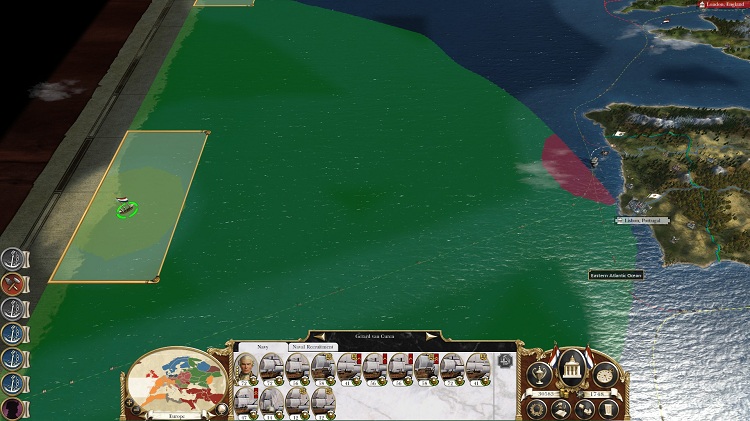
The Dutch fleet led by the third rate, the Westfriesland returns from North America.
 The Republican party had done nothing but administrate the army for almost a decade, and though they had kept the war away from home, industry had definitely slowed. The 1748 election had come at one of the most pivotal moments in their history with armies knocking at their doorstep in every front. Depending on who was elected, the direction of the war could change dramatically.
The Republican party had done nothing but administrate the army for almost a decade, and though they had kept the war away from home, industry had definitely slowed. The 1748 election had come at one of the most pivotal moments in their history with armies knocking at their doorstep in every front. Depending on who was elected, the direction of the war could change dramatically.With the politics spread across even further, policy was becoming disjointed. Rhetoric was replacing reason, and fewer and fewer within the domain of politics were paying attention to the state of the Empire. While things were looking better and better for the army, the country as a whole could very well fall out from underneath them.
 Next I will be continuing my talk of the Dutch, and will be talking about the more modern advances the Dutch have made, and the history that made it possible. In half an hour, we will be presenting world news. If you want news of the current war in the Middle East please channel in to BBC radio 1. David Stephenson will be presenting more on the 80 years war in 3 days.
Next I will be continuing my talk of the Dutch, and will be talking about the more modern advances the Dutch have made, and the history that made it possible. In half an hour, we will be presenting world news. If you want news of the current war in the Middle East please channel in to BBC radio 1. David Stephenson will be presenting more on the 80 years war in 3 days.